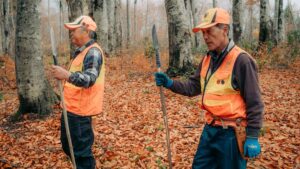
Authorities in Japan are taking significant action in response to a marked increase in bear attacks, particularly in the northern region of Akita. Over the past year, there have been more than 50 reported attacks, prompting local governments to implement new safety measures to protect residents and children.
As concern mounts, local stores in Akita have adjusted their operating hours, closing earlier to mitigate risks associated with bear encounters. Additionally, mail delivery has been suspended in several areas deemed particularly vulnerable to bear activity. This decision reflects a growing urgency among local authorities to ensure public safety in light of the increased bear presence.
Community Response and Safety Initiatives
The escalating situation has also led to a shift in daily routines for families. Many parents are now accompanying their children to school, as fears of encountering bears have made it unsafe for youngsters to walk alone. This change signifies more than just a minor inconvenience; it highlights a broader impact on community life and the mental well-being of residents.
Local authorities have deployed wildlife experts to assess the situation and implement strategies aimed at reducing bear encounters. Efforts include public awareness campaigns to educate residents about bear behavior and safety protocols. Furthermore, residents are being encouraged to secure garbage and other attractants to discourage bears from entering populated areas.
Environmental Factors and Future Outlook
Several factors contribute to the rising number of bear sightings and attacks in Akita. Changes in food availability due to shifts in climate and habitat destruction have led bears to venture closer to human settlements in search of sustenance. Experts warn that as these environmental conditions continue to evolve, communities may need to prepare for an ongoing challenge in managing wildlife interactions.
Local officials are collaborating with wildlife organizations to monitor bear populations and develop long-term solutions. The situation underscores the importance of balancing human safety with wildlife conservation efforts, as bears remain a vital part of Japan’s natural ecosystem.
In conclusion, Japan’s response to the surge in bear attacks in Akita reflects a proactive approach to public safety and wildlife management. As communities adapt to these challenges, the integration of education and environmental stewardship will be crucial in fostering a safer coexistence between humans and bears in the region.







